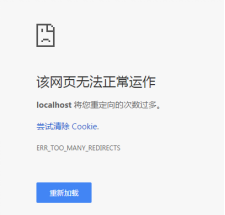继上一篇文章Spring Security总结(一)
用户自定义登陆页
实际开发中,我们不可能使用系统生成的登陆页,而是使用我们自己的登陆页。
构建登陆页login.html
<!DOCTYPE html> <html> <head> <meta http-equiv="Content-Type" content="text/html; charset=UTF-8"> <title>登陆</title> </head> <body> <!-- /login是Spring Security的默认登陆访问路径 --> <form action='/login' method='POST'> <table> <tr> <td>用户名:</td> <td><input type='text' name='username' value=''></td> </tr> <tr> <td>密码:</td> <td><input type='password' name='password' /></td> </tr> <tr> <td colspan='2'><input name="submit" type="submit" value="登陆" /></td> </tr> </table> </form> </body> </html>
构建登陆失败页login_error.html
<!DOCTYPE html> <html> <head> <meta charset="UTF-8"> <title>Insert title here</title> </head> <body> 用户名或者密码错误! </body> </html>
spring-security.xml
<?xml version="1.0" encoding="UTF-8"?> <beans:beans xmlns="http://www.springframework.org/schema/security" xmlns:beans="http://www.springframework.org/schema/beans" xmlns:xsi="http://www.w3.org/2001/XMLSchema-instance" xsi:schemaLocation="http://www.springframework.org/schema/beans http://www.springframework.org/schema/beans/spring-beans.xsd http://www.springframework.org/schema/security http://www.springframework.org/schema/security/spring-security.xsd"> <!-- 以下页面不被拦截 --> <http pattern="/login.html" security="none"></http> <http pattern="/login_error.html" security="none"></http> <!-- 页面拦截规则 use-expressions:是否启动SPEL表达式,默认是true --> <http use-expressions="false"> <!-- 当前用户必须有ROLE_USER的角色,才可以访问根目录及所属子目录的资源 --> <intercept-url pattern="/**" access="ROLE_USER" /> <!-- 开启表单登陆功能 --> <form-login login-page="/login.html" default-target-url="/index.html" authentication-failure-url="/login_error.html"/> <!-- 关闭csrf --> <csrf disabled="true"/> </http> <!-- 认证管理器 --> <authentication-manager> <authentication-provider> <user-service> <user name="admin" password="123456" authorities="ROLE_USER" /> </user-service> </authentication-provider> </authentication-manager> </beans:beans>
security="none" 设置此资源不被拦截。
如果你没有设置登录页security="none" ,将会出现以下错误

因为登录页会被反复重定向。
login-page:指定登录页面。
default-target-url:指定了成功进行身份验证和授权后默认呈现给用户的页面。
authentication-failure-url:指定了身份验证失败时跳转到的页面。
csrf disabled="true" 关闭csrf ,如果不加会出现如下错误

CSRF(Cross-site request forgery)跨站请求伪造,也被称为“One Click Attack”或者Session Riding,通常缩写为CSRF或者XSRF,是一种对网站的恶意利用。